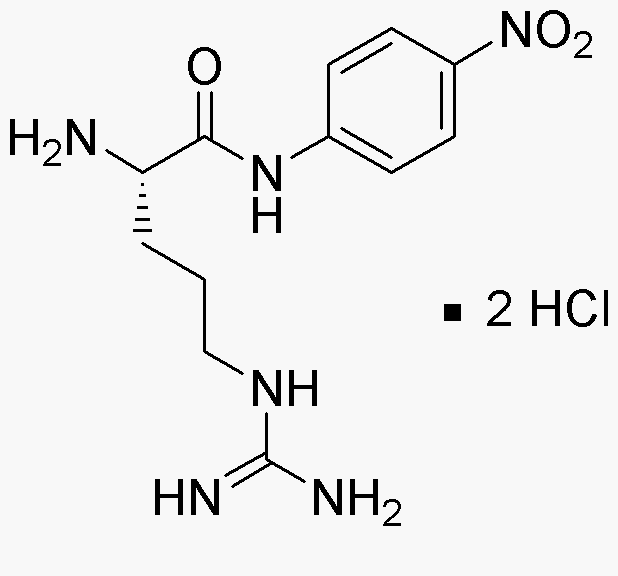L-Arginine 4-nitroanilide dihydrochloride is widely utilized in research focused on:
- Biochemical Assays: This compound serves as a substrate in various enzyme assays, particularly in studying nitric oxide synthase activity, which is crucial for cardiovascular research.
- Pharmaceutical Development: It is employed in drug formulation studies, especially those targeting vascular health, due to its role in nitric oxide production.
- Protein Interaction Studies: Researchers use it to investigate protein-ligand interactions, providing insights into cellular signaling pathways.
- Diagnostic Applications: The compound can be used in developing diagnostic tests for conditions related to nitric oxide metabolism, aiding in early detection of cardiovascular diseases.
- Research on Neuroprotection: It is explored for its potential neuroprotective effects, contributing to studies on neurodegenerative diseases and brain health.
General Information
Properties
Safety and Regulations
Applications
L-Arginine 4-nitroanilide dihydrochloride is widely utilized in research focused on:
- Biochemical Assays: This compound serves as a substrate in various enzyme assays, particularly in studying nitric oxide synthase activity, which is crucial for cardiovascular research.
- Pharmaceutical Development: It is employed in drug formulation studies, especially those targeting vascular health, due to its role in nitric oxide production.
- Protein Interaction Studies: Researchers use it to investigate protein-ligand interactions, providing insights into cellular signaling pathways.
- Diagnostic Applications: The compound can be used in developing diagnostic tests for conditions related to nitric oxide metabolism, aiding in early detection of cardiovascular diseases.
- Research on Neuroprotection: It is explored for its potential neuroprotective effects, contributing to studies on neurodegenerative diseases and brain health.
Documents
Safety Data Sheets (SDS)
The SDS provides comprehensive safety information on handling, storage, and disposal of the product.
Product Specification (PS)
The PS provides a comprehensive breakdown of the product’s properties, including chemical composition, physical state, purity, and storage requirements. It also details acceptable quality ranges and the product's intended applications.
Certificates of Analysis (COA)
Search for Certificates of Analysis (COA) by entering the products Lot Number. Lot and Batch Numbers can be found on a product’s label following the words ‘Lot’ or ‘Batch’.
*Catalog Number
*Lot Number
Certificates Of Origin (COO)
This COO confirms the country where the product was manufactured, and also details the materials and components used in it and whether it is derived from natural, synthetic, or other specific sources. This certificate may be required for customs, trade, and regulatory compliance.
*Catalog Number
*Lot Number
Safety Data Sheets (SDS)
The SDS provides comprehensive safety information on handling, storage, and disposal of the product.
DownloadProduct Specification (PS)
The PS provides a comprehensive breakdown of the product’s properties, including chemical composition, physical state, purity, and storage requirements. It also details acceptable quality ranges and the product's intended applications.
DownloadCertificates of Analysis (COA)
Search for Certificates of Analysis (COA) by entering the products Lot Number. Lot and Batch Numbers can be found on a product’s label following the words ‘Lot’ or ‘Batch’.
*Catalog Number
*Lot Number
Certificates Of Origin (COO)
This COO confirms the country where the product was manufactured, and also details the materials and components used in it and whether it is derived from natural, synthetic, or other specific sources. This certificate may be required for customs, trade, and regulatory compliance.


